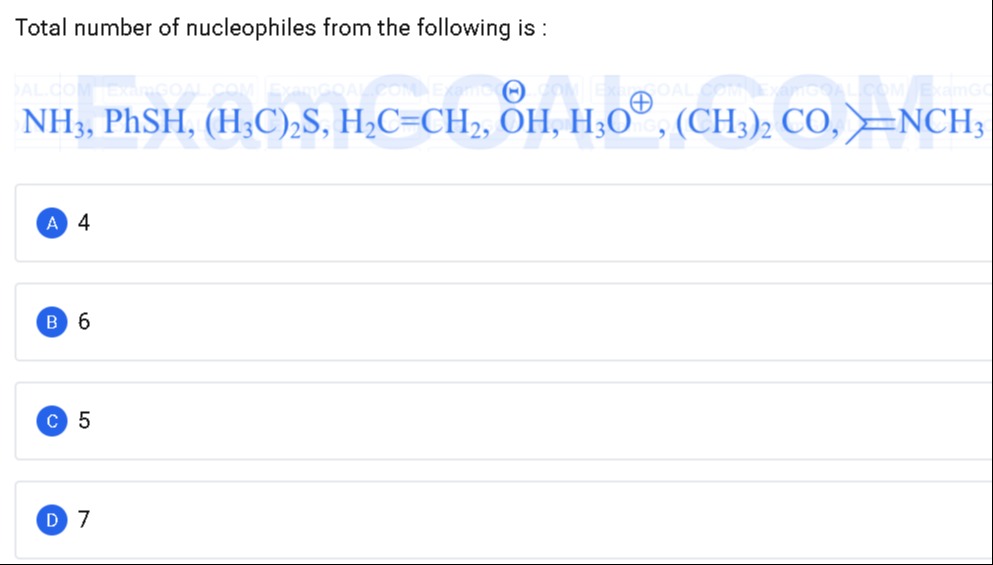Question
Question: Total number of nucleophiles from the following is: \(NH_3\), \(PhSH\), \((H_3C)_2S\), \(H_2C=CH_2\...
Total number of nucleophiles from the following is:
NH3, PhSH, (H3C)2S, H2C=CH2, OH⊖, H3O⊕, (CH3)2CO, >NCH3

A
4
B
6
C
5
D
7
Answer
7
Explanation
Solution
Key nucleophilic species are those with available lone pairs or π‑electrons capable of donating electron density. Identifying each: • NH3: lone pair on N → nucleophile • PhSH: lone pair on S → nucleophile • (H3C)2S: lone pair on S → nucleophile • H2C=CH2: π‑bond can attack electrophiles → nucleophile • OH−: strong nucleophile • H3O+: protonated, lacks electrons to donate → not nucleophile • (CH3)2CO: lone pairs on carbonyl O → weak nucleophile • >NCH3: lone pair on tertiary N → nucleophile Total = 7 nucleophiles.
